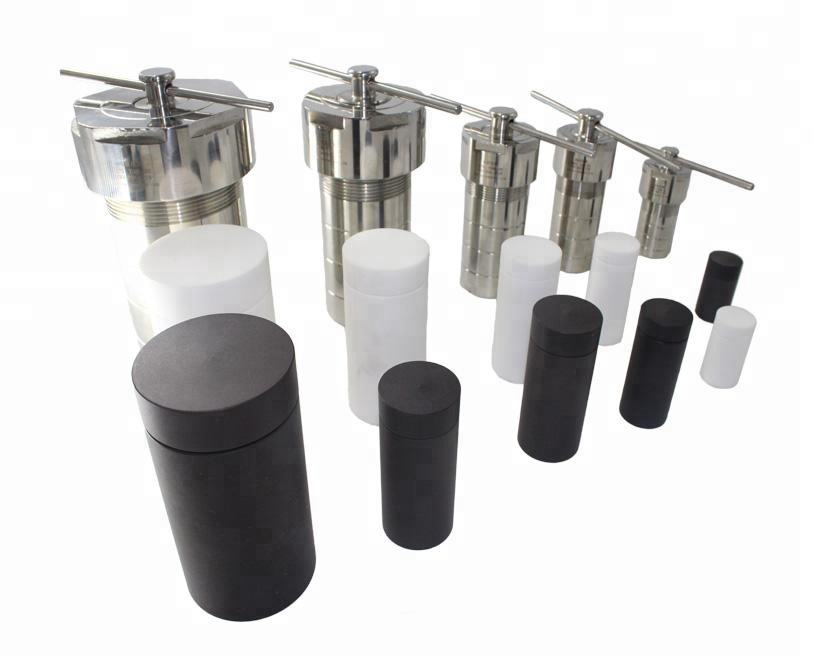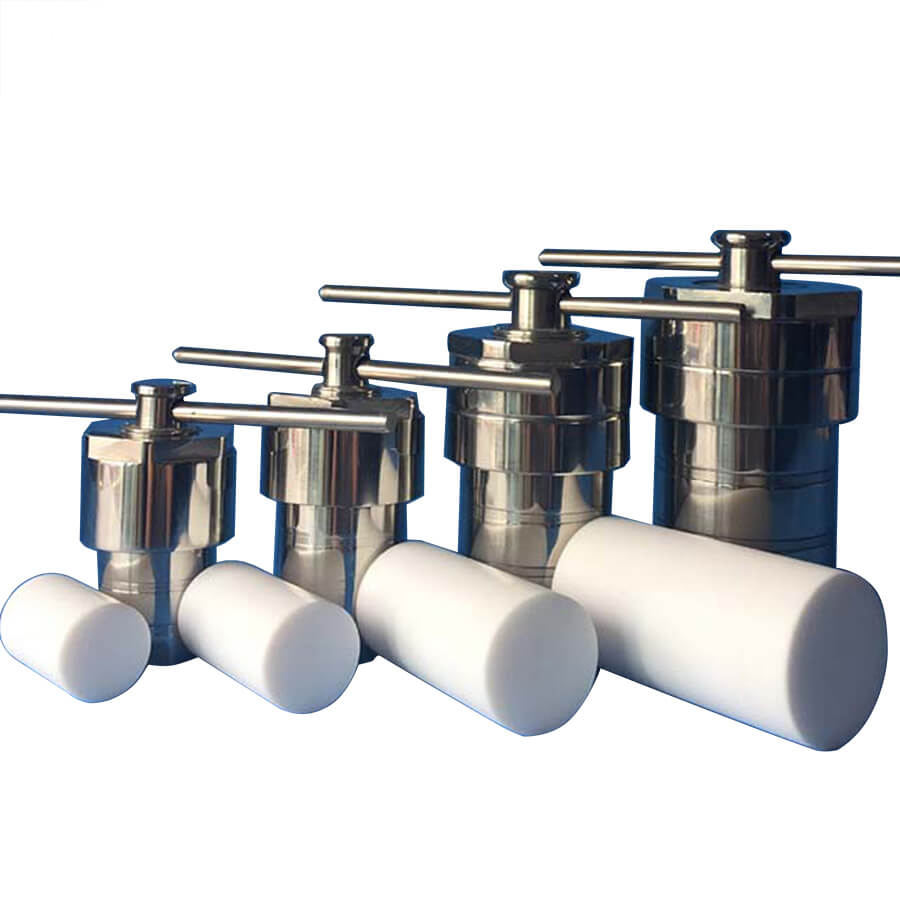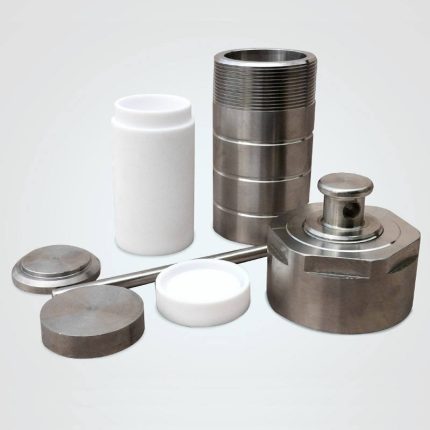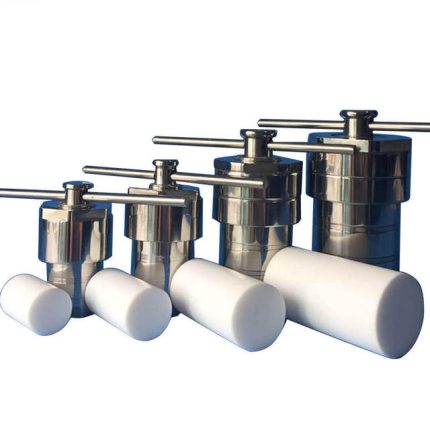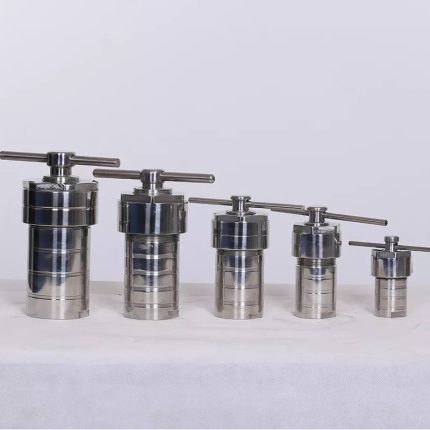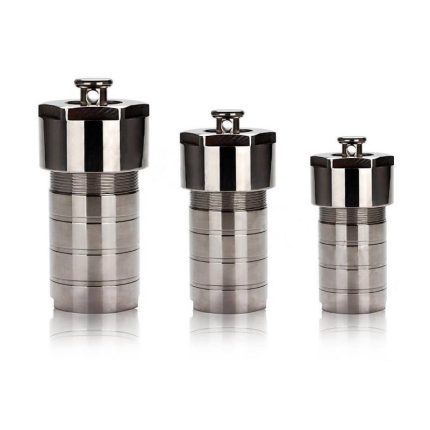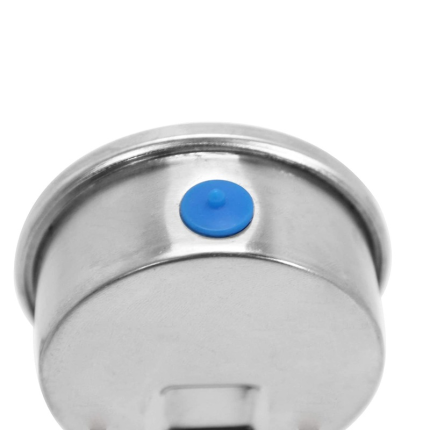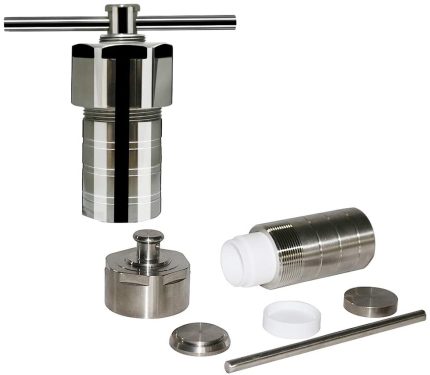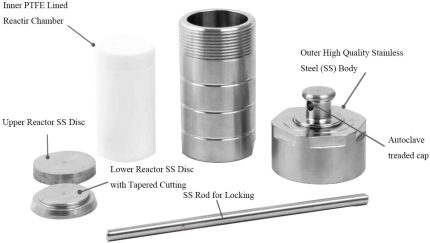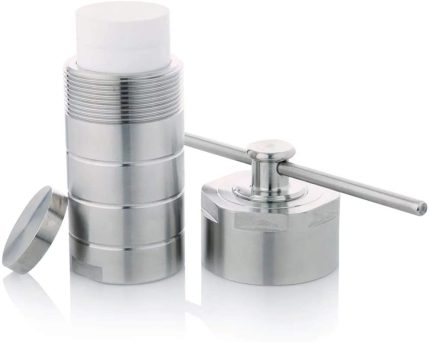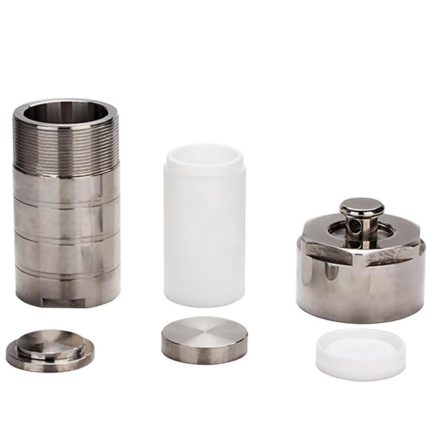PPL Lined 25ml-2000ml 300 Degree Centigrade Hydrothermal Synthesis Autoclave Vessel Reactor
The 200ml PTFE Liner for Hydrothermal Synthesis Autoclave Reactor
Highlights:
Protected by 1-year warranty.
Max operation pressure: 3 Mpa.
>Max operation temperature: 200 deg C.
Brief introduction of Hydrothermal Autoclave Reactor with PTFE Chamber 100ml:
Hydrothermal Autoclave Reactor with PTFE Chamber is widely use in materials, energy, environment engineering, nanotechnology, polymer industry, catalysis, Petrochemical Industry and other fields of scientific research, experiments.
However university teaching, scientific research units commonly use small reactors. Hydrothermal Autoclave Reactor with PTFE Chamber 100ml uses high-quality stainless steel with durable, reliable structure; the sealing effect being stable long term without leakage.
Hydrothermal Autoclave Reactor with PTFE Chamber 100ml or Teflon Lined Autoclave Reactor is elegantly designed and easy to operate. High-quality stainless steel structure built that guarantee durability. It come with gas-tight/air-tight with PTFE or PPL inner chamber that reduces corrosion. Also is an excellent acid resistance and alkali resistance reactor.
hydrothermal autoclave reactor with teflon chamber 100ml:
Hydrothermal Autoclave Reactor with PTFE Chamber 100ml is corrosion resistant. It is also acidic and alkaline resistant hence used for highly alkaline and acidic solutions. We use Hydrothermal Autoclave Reactor with PTFE Chamber 100ml for hydrothermal synthesis mostly for crystallisation processes and nanoparticles. Other widely used applications of Hydrothermal Autoclave Reactor with PTFE Chamber 100ml includes Chemical synthesis , Synthesising of nanoparticles, For cultured crystal growth, Polymerisation reaction, Hydrothermal decomposition, Catalyst synthesis, Hydrothermal oxidation, Hydrothermal precipitation, Material Digester/digestion, Crystallisation process, Dissolving of heavy metals, refractory material, organic chemicals etc.
How do you use hydrothermal synthesis autoclave reactor?
1. Place the Autoclave and sterilizing material on the table or on the shelf.
2. Twist the screw-type threaded primary SS cap (SS stainless steel Alloy 304) in an anticlockwise direction until it is opened.
3. There is 2 type of SS gasket/lid in the reactor, 1 is on the bottom side and the other is on top of the F4/PTFE or PPL container.
4. Lift the top SS Stainless steel gasket or lid and take-out milky white color PTFE/F4 or PPL reaction chamber.
5. Now fill solvent (as per liner’s capacity) in the reaction chamber and seal it.
6. Make sure that the F4/PTFE cap should be air-tight to avoid pressure leakage.
7. Place F4/PTFE or PPL liner in a stainless steel chamber.
8. Keep top gasket over the vessel and make sure that the F4/PTFE-lined vessel placed properly inthe Stainless Steel chamber.
9. Then twist primary SS cap in a clockwise direction until it does not turn anymore.
10. The secondary SS cap has been given at the top of the primary cap for extra tightening to avoid pressure leakages.
11. Rotate primary stainless steel cap in the clockwise direction with the help of locking rod for additional tightening.
12. Placed the Hydrothermal Autoclave Reactor with PTFE Chamber 100ml in oven or furnace and heat it till reactor’s safe temperature.
13. Increase the temperature of the oven and set heating rate 5C/minute only.
14. A researcher can heat the Hydrothermal Autoclave Reactor with PTFE Chamber 100ml till 200C for safe use of PTFE lining, 270C for PPL lining.
15. After completion of the hydrothermal synthesis reaction, the autoclave’s cooling rate will be 5C/minute.
16. Make sure that, after completion of the process clean PTFEor F4 liner properly for reuse.
